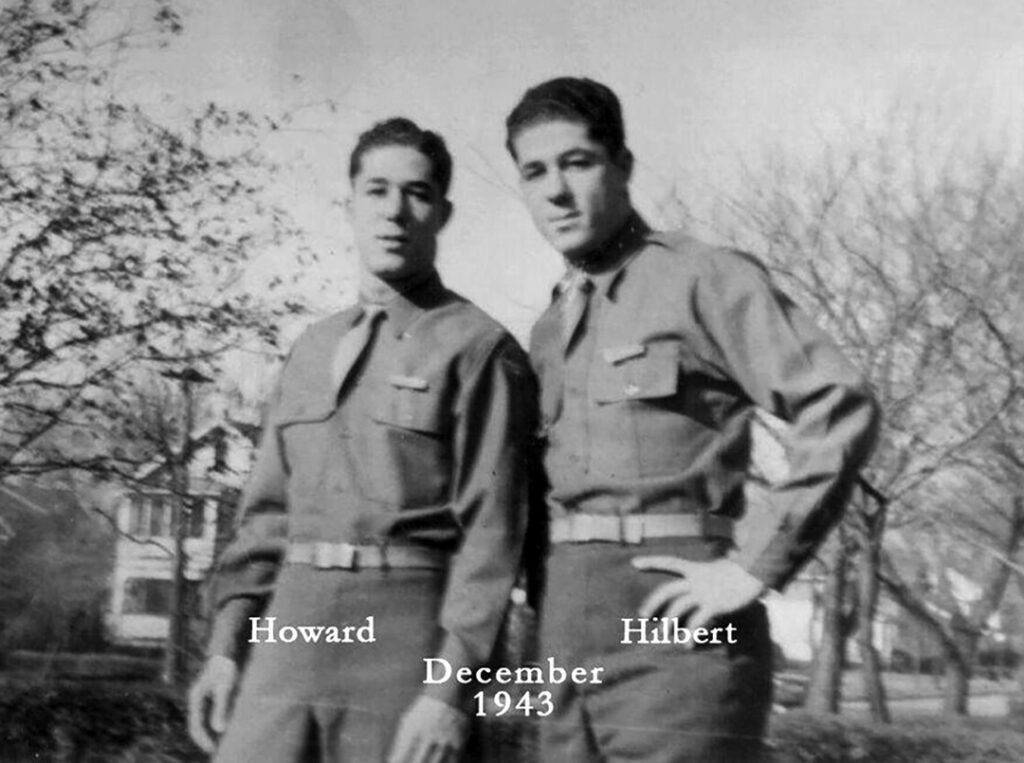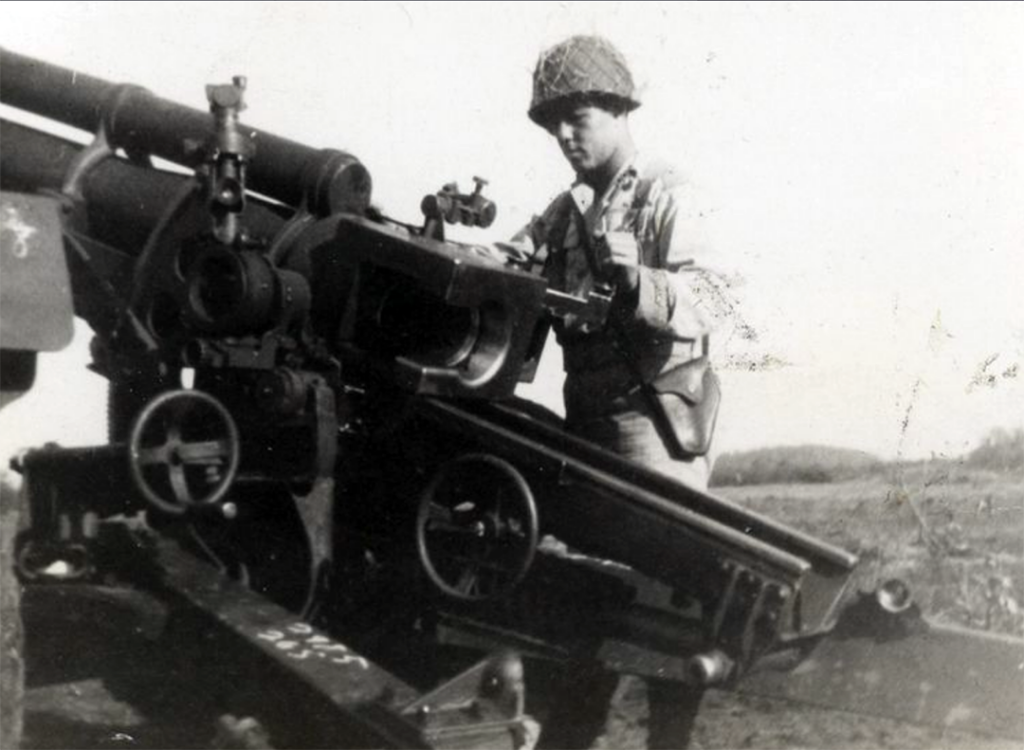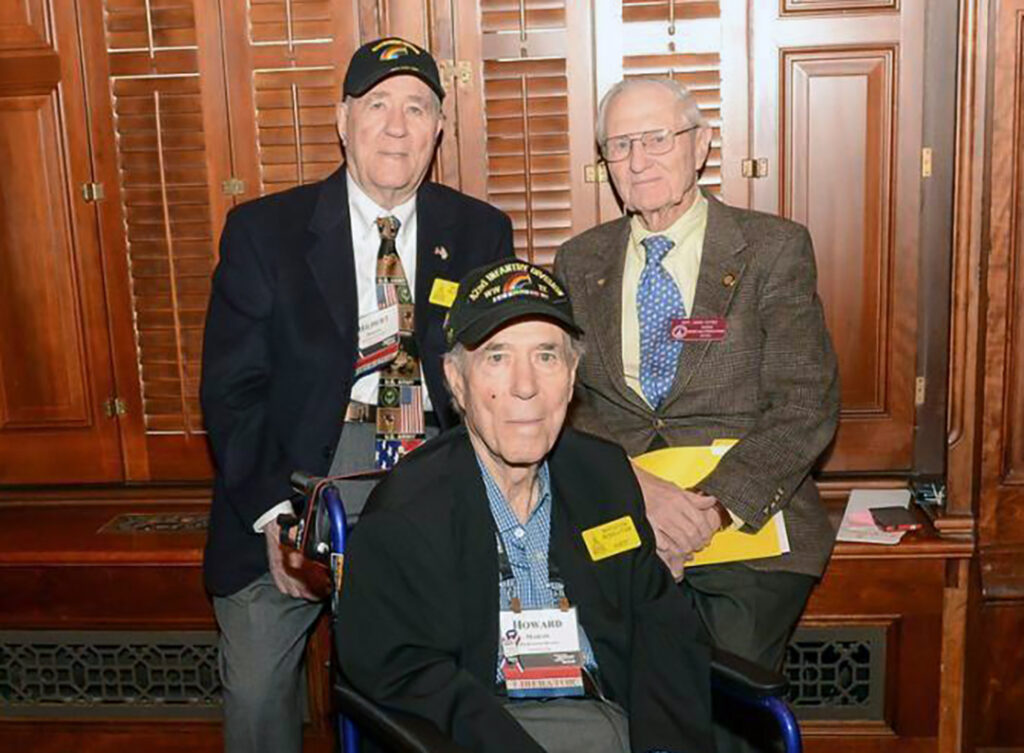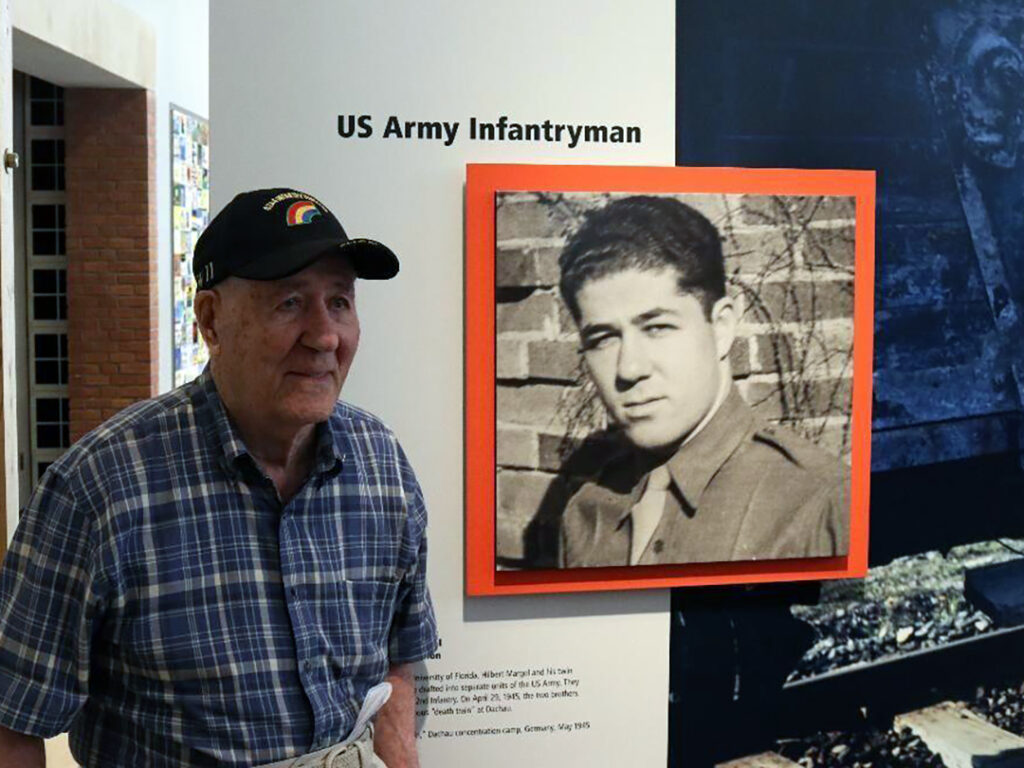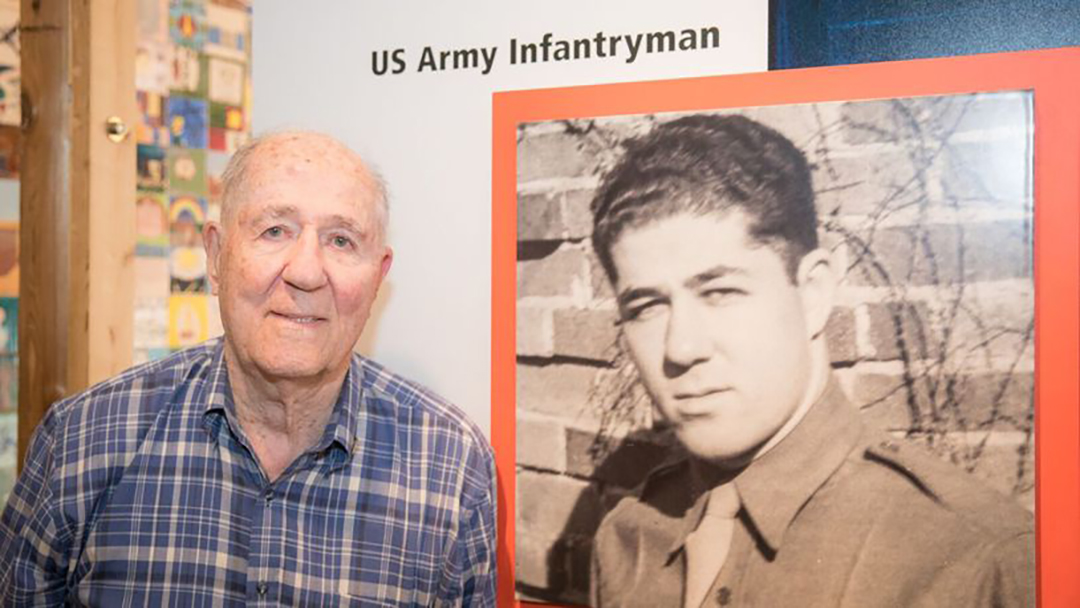
Hilbert Margol – WWII veteran and Dachau liberator
The Dachau concentration camp was liberated on April 29, 1945. Hilbert Margol and his brother Howard were there and documented the tragedy.
Pilam and Army enlistment
Margol pledged PiLam at the University of Florida in 1942 with his twin brother, Howard. He said, “We had boyhood friends who entered the University of Florida just ahead of us. We followed them into joining the Delta Chapter of Pi Lambda Phi.”
He joined an ROTC unit and after just a few months was called upon by his country to serve in WWII. Margol quipped, “the Army decided there were too many healthy young men in college.”
He and his brother enlisted together and wanted to fight alongside each other but they were initially separated due to U.S. policy driven by the the tragedy of the Sullivan brothers. After his “two star” mother wrote several letters to President Roosevelt, the brothers were reunited.
WWII and Dachau
The Margol brothers’ unit, the 42nd Infantry “Rainbow” Division, was activated and went into combat in France in January 1945. They fought across Europe serving in the Alsace, Ardennes, and Rhineland campaigns, until their unit found their way to Dachau, Germany in April.
They approached the town, dug in and set up their howitzers, but the brothers noticed an unusual strong odor. Their gun sergeant gave them permission to go through the woods to determine the source.
They came upon the Dachau concentration camp.
Near the gates of Dachau, Margol and his brother stumbled across a line of boxcars that were full of prisoners’ bodies, and they took photographs of the shocking sight. Margol said, “we had a Brownie box camera that we had liberated somewhere along the way. But we only had one roll of film, so we were very judicious in taking pictures.” The two photos of the boxcars were later donated to U.S. Holocaust Memorial Museum.
Though he doesn’t consider himself a “liberator,” after his unit and other American forces reached the camp, over 30,000 prisoners were freed.
Before, and even after seeing Dachau, Margol remembers not understanding the full extent of the concentration camps in Germany. It was only after Dachau, when his unit was transporting liberated Jews to Austria, that was he was reminded of the strong faith that gave them the strength to survive.
Coming Home and passing on his knowledge
Hilbert and Howard survived the war and returned home. He reflected on his good fortune saying, “we returned to the University of Florida and rejoined the fraternity with a mostly younger group of fraternity brothers. Some of the brothers that we knew in 1942 and early 1943 were no longer at the university of Florida. They were either lost during the war or they resumed their college education at other universities.”
Hilbert enjoyed his days in Pilam and continued to stay in touch, “after we graduated, the fraternity brothers continued our association with each other, especially my fraternity brothers in the Jacksonville, Florida area.”
After college, Margol and his brother started a business selling furniture in Atlanta. They were identical twins and used it as a marketing tool, “My twin brother and I started making TV advertisements. Our theme was, ‘Mama got two for the price of one, and so can you!’”
Later in life, Margol who is Jewish, decided that his experience should be known to future generations.
He has given numerous interviews to newspapers, TV stations, historical organizations, and museums. He said, “I hope and pray that my offspring and the offspring of other witnesses outlive the offspring of deniers, and that’s what history is.”
Article written by Shawn Mahoney (Temple University, ’92)



